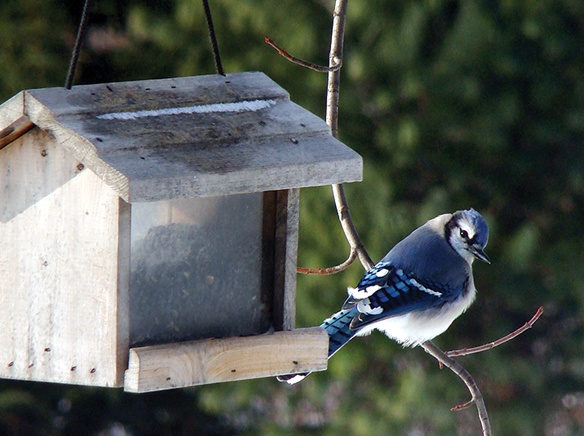Birds are beautiful creatures that can make a lawn and garden feel even more serene. Providing snacks to supplement what birds naturally find in the wild guarantees up close and personal interactions with the scores of species that call neighborhoods home.
Bird feeders are particularly important in colder climates and during wintertime when food may be scarce. Keeping birds well fed helps them survive over winter and continue to repopulate in the spring. Bird feeding isn’t all for the birds, either. Ashley Dayer, an associate professor in the Department of Fish and Wildlife Conservation at Virginia Tech, argues that feeding birds also is a benefit to humans because it stimulates compassion for the animals.
The type of bird feeder a person places in the yard determines which species may be drawn to the property. The following are various types of feeders to consider.
SUET FEEDERS
Suet cakes are high-energy food sources that attract birds like woodpeckers and nuthatches. They are particularly beneficial in colder months or regions where birds need extra fat for energy. These cage-like feeders snap around the rectangular suet cake and hang from a pole or tree.
GROUND FEEDER
Ground feeders are simple screen-bottomed trays that sit several inches off of the ground or on a deck to help keep seeds and grain from coming in contact with droppings. Ground feeders are a favorite of juncos, sparrows, goldfinches, and cardinals, among others.
SUGAR WATER FEEDER
These feeders come in different shapes, from tubes to round dishes, and are magnets to hummingbirds. They typically have red coloring to be more attractive to those high-speed flyers.
NYJER BIRD FEEDER
Small birds like goldfinches love to dine on nyjer seeds, which are tiny, black thistle seeds. These feeders are tube-shaped mesh socks designed to hold this specific seed. The small feeding ports prevent seed waste and cater to the small beaks of finches.
HOPPER BIRD FEEDER
These are the feeders many people think of when they envision bird feeders. Hopper bird feeders hold a large amount of seed and often have a roof or a design that mimics a house or barn. The covered design helps to keep seeds dry and might be the best hanging feeder for people who live in areas with a lot of rain. Hoppers will attract blue jays, grackles, cardinals, and blackbirds.
TUBE FEEDERS
Tube feeders will attract an array of birds. They are cylindrical in shape with various ports to enable birds to perch and feed.
Window and smart bird feeders
These types of bird feeders attach to windows to allow homeowners to view the birds up close. Smart varieties have cameras on the feeders that will send a feed via an app to a smart phone or computer. Some even may identify the bird species on the feeder at any given point in time.
Bird feeders provide enjoyment for bird watchers and nutritious food various species.












